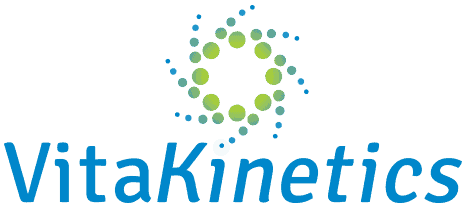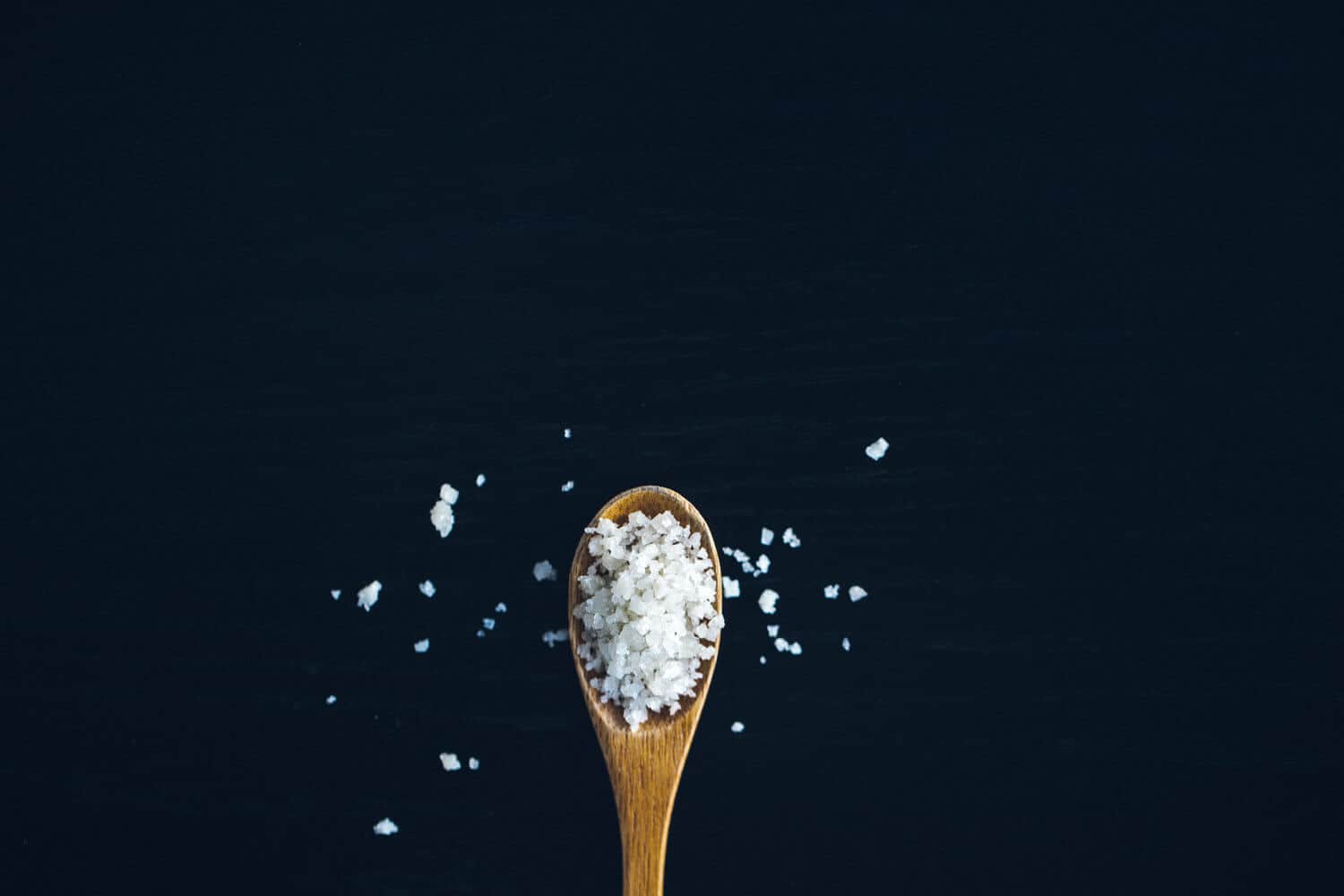Salt, like fat, has gotten a bad rap over the years. We have all heard that salt causes hypertension or high blood pressure which can lead to atherosclerosis, heart attack, stroke, kidney disease and early death. So much fear is associated with this, that we have attempted to remove all salt from our diets. Our salt shakers stay tucked away. When a recipe calls for “salt to taste” we assume it means it’s actually unnecessary.
What I aim to do here is bring the light onto salt to understand how it actually is essential to life and avoiding it at all costs can have a negative impact on your health and function. This blog is not a treatment for heart disease, rather an acknowledgement of the importance of essential electrolytes that we cannot survive without. (In case you were wondering, people sensitive to salt do in fact result in a hypertensive response, BUT this is a small portion of the population and those with renal disease are the most salt sensitive.)
Salt(NaCl) is made up of two electrolytes Sodium(Na+) and Chloride(Cl-). Potassium (K+) is another positively charged electrolyte found in foods like avocado. Electrolytes are critical to regulating the fluid balance in our bodies as well as needed for nerve conduction and muscle contraction. Electrolytes are also water soluble and readily excreted by the kidneys assuming you have healthy functioning kidneys. As an aside, Chloride, the other half of salt, seems to have an important role in running our innate immune system to fight against infection by stimulating the neutrophil.
Our fluid balance is tightly regulated by the renin-angiotensin system which is composed of our kidneys, blood vessels and adrenal glands. A critical player in this system is the sodium-potassium pump. The pump uses energy in the form ATP to pump two potassium ions into the cell and expel three sodium ions. This change in the concentration of electrolytes across the cellular membrane creates a charge that allows for nerve conduction and muscle contractions. This electrical charge creates the ability to send messages throughout the nervous system which leads to the ability to coordinate muscle contractions…including heart beats.
This process is vital to being alive. The sodium-potassium pump allows you to think by transmitting central nervous system impulses in the brain, feel as a result of sensory nerves in your skin, understand your position in space as a result of signals from proprioceptive nerve endings in your joints, and even move your body by allowing the actin and myosin filaments slide in the muscle cell. Severe electrolyte loss and fluid loss (like during severe bouts of diarrhea or vomiting) can be fatal if fluid and electrolytes are not replenished in time since the ability to send messages and contract the muscles that keep you alive becomes impossible. Severe deficiencies in electrolytes can lead to appetite loss, muscle cramps, confusion, apathy, constipation and irregular heartbeats. Sudden death can occur in fasting, anorexia nervosa, or starvation as a result of heart failure due to potassium and sodium deficiency.
So where do you get electrolytes from?
Potassium is found in many whole food sources including but not limited to:
-
Avocado
-
Acorn squash
-
Spinach
-
Beet greens
-
Sweet potato
-
Wild-caught salmon
-
Dried apricots
-
Pomegranate
-
Coconut water
-
White beans
-
Banana
-
Kale
-
Mushrooms
As you guessed, foods highest in sodium are not whole foods. Rather they are heavily processed foods like:
-
Lunch meat
-
Cheese
-
Pizza
-
French fries
-
Chips
-
Cereals
A few potentially whole foods high in sodium are:
-
Sea Salt
-
Pickles (Bubbies is my favorite with no preservatives)
-
Olives
-
Tuna (careful with heavy consumption because of mercury)
-
Bacon (pastured pork cured in salt only)
This is an important distinction here between Potassium and Sodium.
Potassium is readily available in whole food sources and sodium is NOT.
Why does this matter?
There are conditions or environments where you can become sodium depleted and it may be as a result of how you eat.
If you are seeking a healthy lifestyle and you are focusing on whole, nutrient dense foods as nature intended, then you are not readily consuming enough sodium unless you are salting your food. Especially in conditions where you are being strict like during an elimination diet or whole 30 or even dabbling with ketogenic diets. Many of these diets are used therapeutically for health conditions and to identify reactive foods. They are powerful tools. Yet, it is important to understand that with these diets, if you aren’t ingesting salt on purpose, you may actually become sodium deficient. This may result in other symptoms like fatigue, poor appetite, muscle cramps and even constipation. You may even find that your cravings for carbohydrates, salty snacks and even sweets (because of fatigue) is driven by your need for sodium.
Another more well-known condition of sodium loss is with sweating during exercise especially during endurance sports. This is why hydration drinks like Gatorade have become so popular. Electrolyte loss however, really only occurs with significant sweating which isn’t what occurs during most children’s activities. Rather the hydration drink has become a means to increase sugar intake in conditions unnecessary for replenishing electrolytes… this may be another story for another time. Directly consuming salt in your diet or combining it with potassium rich foods and fresh water may be sufficient. However, if consuming electrolyte drinks, read the ingredient list and be sure you are getting what you need not refined sugars and coloring.
How much sodium do we need?
As with almost anything health related, it depends on who you ask and your personal lifestyle. The 2010 Dietary Guidelines for Americans recommended to reduce intake to less than 2300 mg. However, the Institute of Medicine published revised recommendations that there was no evidence of benefit for reducing sodium intake below 2300 mg/day. And yet, if you are making a whole foods based meal, remember you will have ZERO sodium, unless you salt your food.
What does 2300 mg of sodium look like?
That’s 1 tsp of salt….for the average healthy adult in homeostasis.
Dr. James DiNicolantonio PharmD, author of The Salt Fix, actually recommends closer to 3-4 g of sodium per day (1.5-2 tsp) to achieve your salt set point. This is the level of sodium intake to maintain ideal health. This may be more if you participate in significant physical activity (Crossfit, Endurance running, etc.) or even stressful conditions (in my opinion this also includes parenting, recovering from debilitating injury, surgical procedures, refined foods diet…stress is a personal perception). He also describes the salt thermostat that we each individually have. It is our salt set point which is determined by our brain and renin-angiotensin-aldosterone system. It is a self-protective mechanism where if you crave salt, it is probably your body telling you it needs sodium to reach the proper amount in stores. It also means that it’s unlike sugar…it’s not addictive in that the more you eat the more you want endlessly, but that if you can taste saltiness and crave salty chips, you probably NEED the salt.
What salt should I choose?
Redmonds Sea Salt appears to be mostly free of contaminants and has traces of iodine which is of concern for thyroid function.
Other sea salts are fine, but they do not contain Iodine and may actually suffer from problems of contaminations like pollutions of the ocean. It would be important to eat sources of iodine like sea vegetables regularly if not consuming idolized salt. Iodized sea salt or even table salt is adequate to use.
What’s the take home message that won’t panic your cardiologist?
Salt your vegetables to gain all the required needs for your Sodium-Potassium pump…it even makes vegetables more palatable for kids and adults.
What is my favorite way to replace electrolytes outside of salting my vegetables?
-
Sprinkle salt on my tongue and wash down with water especially on the go before or after Crossfit work outs. Not joking.
-
Mineral Broth…salted to taste especially during a cold morning or winter day. I make all my soups and chillis with mineral or bone broth. My mineral broth recipe includes Kombu, a sea vegetable as a source of iodine and plenty of Potassium rich foods to meet your needs.
-
Gatorade Alternative – Mineral water/Selzter water, fresh orange juice, splash of my favorite Kombucha flavor and a dash of salt…I add a dash honey to sweeten for the kiddos. I mostly use this during times of sickness.
-
Bubbies Pickles….if I really worked hard at Crossfit, then maybe I drink a bit of pickle juice after I eat a crisp dill pickle.
You may be wondering why or how this even came up? This past summer I was struggling with headaches and a feeling like I couldn’t get my heart to respond during exercise or even when at high altitudes. I even spoke to my doctor about how to deal with altitude sickness or if I needed to do work up. I generally eat whole foods with plenty of fruit and vegetable and fresh water. Yet, I rarely salted my food. When I began exploring salt, and the Sodium-Potassium pump, I realized that I was likely deficient. Since replacing salt by simply salting my food and making up other salt to consume those similar to what Dr DiNicolantonio describes, I haven’t had any more headaches, nor adverse reaction to altitude, and my workouts have felt…good. I have also had clients starting out with whole foods based lifestyles to initially do well only to falter over time…. with the addition of salting their foods to taste in every bite, they have returned to the energy they originally had when making the lifestyle change.
It’s sometimes a dramatic shift. Remember, the best way to approach this is to listen to your body and evaluate your own personal response. You do you and I will do me…. salt just may be a way to do you better.
Remove. Replace. Restore.
Remove fear of salt.
Replace with salting your wholesome food. Find creative ways to increase intake if you are in a stressful life event. Be mindful of your body’s response in case you your ‘salt-sensitive’.
Restore your energy and vibrance for life.
Eat Well. Move Well. Sleep Well. Connect Well. Supplement Well….even with salt.
Food for thought: As I was looking into salt and conditions like osteoarthritis I found a few interesting studies that showed placebo treatments of saline (a sodium solution) into knee joints actually had significant immediate and long term pain relief. Such a significance that the placebo treatment of saline injection as a comparator may not actually be a true placebo. I wonder if it may have something to do with sodium and it’s effect of availability to the mechanical – ion channel in the knee joint. Hmm
Another food for thought: Did you know that a history of severe migraine or headache history is INVERSLY correlated with dietary sodium intake??? Meaning, those with worse headache took in less salt. Hmmm hmmm
https://www.ncbi.nlm.nih.gov/pubmed/?term=saltzman+and+saline+and+knee+and+2017
https://www.ncbi.nlm.nih.gov/pubmed/19384834
https://www.ncbi.nlm.nih.gov/pubmed/?term=slimko+and+2010
https://www.ncbi.nlm.nih.gov/pmc/articles/PMC4763953/
https://www.ncbi.nlm.nih.gov/pmc/articles/PMC4420256/
https://www.ncbi.nlm.nih.gov/pubmed/?term=Slimko+and+2010
https://www.ncbi.nlm.nih.gov/pmc/articles/PMC4836999/
https://www.ncbi.nlm.nih.gov/pubmed/27238876

